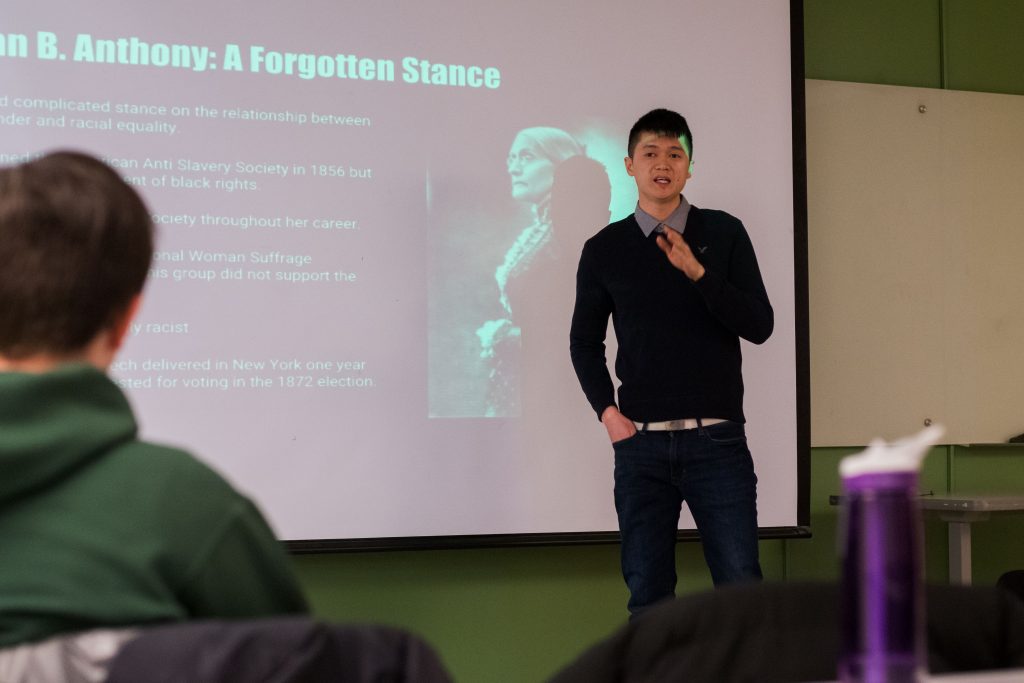
Although white women got the right to vote with the help of the women’s suffrage movement in 1920, black women in some southern states couldn’t cast ballots until more than 40 years later.
On Tuesday night, Binghamton University’s Democracy Matters club gave a presentation in the University Union that discussed intersectionality within the women’s suffrage movement. The group is the local chapter of a national organization that aims to effect democratic reform by working to reduce the role of money in politics. The conversation focused on the romanticization of the movement despite its exclusion of women of color, transgender and intersex women.
Intersectionality refers to the ways in which interconnected demographics, such as race, class and identity, affect an individual’s privilege in society. Democracy Matters said intersectionality was lacking within the past women’s suffrage movement and often continues to be ignored in various women’s empowerment movements today.
Jacob Chank, the vice president of Democracy Matters and a junior majoring in political science, said the purpose of the presentation was to highlight the importance of inclusivity.
“You have to include everybody in your definition of democracy,” Chank said. “That’s the main problem with the suffragist movement and that’s the main problem with the founding of this country.”
The group spoke about various articles from The Revolution, a late-19th century newspaper established by white women’s activists like Elizabeth Cady Stanton and Susan B. Anthony. In the articles, the women compared their plight with that of slaves and wrote that racism could be endured, but sexism could not. Because of this lack of intersectionality, attendees said women of color did not benefit from the initial women’s suffrage movement. It wasn’t until the Voting Rights Act of 1965 that legal barriers to voting began to come down.
The group also compared the lack of intersectionality within the women’s suffrage movement to modern women’s activism. Members of the club spoke about the alienation of transgender women at the latest Women’s Marches through the emphasis of female genitalia found on marchers’ signs. Women of color were also disparaged, particularly during discussion about the pay gap, which is often represented by using statistics that only represent white women.
Many of those present who attended the 2018 Binghamton Women’s March on Jan. 20 mentioned several people chanting “All lives matter” in response to “Black lives matter.”
Lauren Hirschkind, an undeclared freshman, said that she thought the meeting was interesting because she wanted to learn more about the exclusivity of the recent Women’s March.
“At the Women’s March, I wasn’t even aware that a lot of this was happening,” Hirschkind said. “I mean, I knew about the signs, but I didn’t really know a lot about everything else.”
Winter Clark, the president of Democracy Matters and a senior double-majoring in philosophy and the individualized major program, said they worry that white women too often become the center of the argument for women’s rights.
“A lot of the time what happens is that conversation gets centered around one specific group of people — mostly white women — kind of leaving women of color out of the conversation,” Clark said.


